Iguazu Falls are one of the most impressive waterfalls in the world. They are a dream destination for many travellers. The falls are located on the frontier between Argentina and Brazil. If you have enough time, it’s better to see Iguazu Falls from both the Argentinian and Brazilian sides. If you do not have much time, visiting the Argentinian side is advisable. So check out my experience and practical tips to get the most from your visit.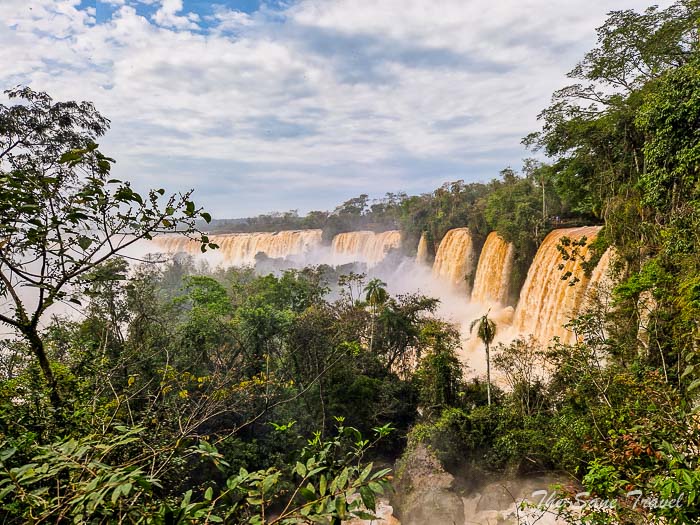
How to get to Iguazu
As the road distance from Buenos Aires to Iguazu is nearly 1,300 kilometres, I recommend taking a flight to Iguazu. The flight time is about two hours. There are two airports in Buenos Aires – Ezeiza International Airport (EZE) and Buenos Aires' Aeroparque (AEP) – and you can get to Iguazu from both of them. The departure time, of course, is of utmost importance; however, if you can choose between the two, Aeroparque is much more convenient because it’s closer to the city centre and easily accessible by cheap public buses. The city near Iguazu Falls is called Porto Iguazu and has only one airport, Cataratas del Iguazú International Airport (IGR).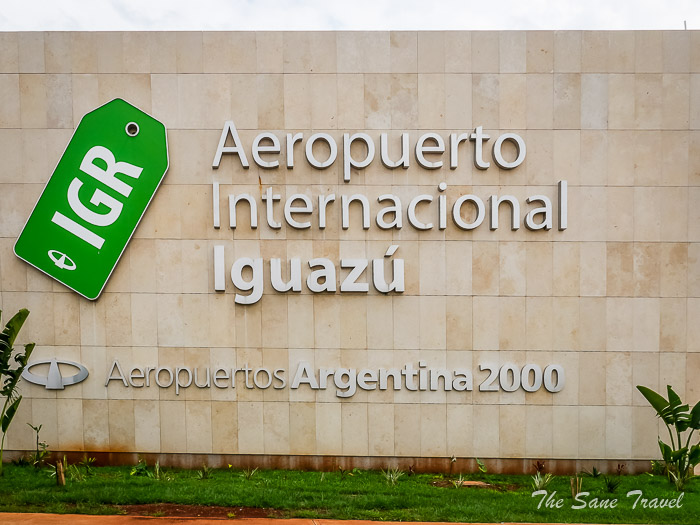 For available flights, check Google flights. At the time of writing this article, three airlines are flying to Iguazu from Buenos Aires: Aerolineas Argentinas, F.B. Lineas Aereas and jetSMART. I have only flown with Aerolineas Argentinas, booking several domestic flights with them. Out of the five flights, three were changed and two experienced departure delays for a few hours. Because of that, I wouldn't advise you to take a day trip to Iguazu Falls, as you can run out of time. It’s best to stay at least one or even two nights in Porto Iguazu; it will allow you not to rush anything and have enough time for your visit.
For available flights, check Google flights. At the time of writing this article, three airlines are flying to Iguazu from Buenos Aires: Aerolineas Argentinas, F.B. Lineas Aereas and jetSMART. I have only flown with Aerolineas Argentinas, booking several domestic flights with them. Out of the five flights, three were changed and two experienced departure delays for a few hours. Because of that, I wouldn't advise you to take a day trip to Iguazu Falls, as you can run out of time. It’s best to stay at least one or even two nights in Porto Iguazu; it will allow you not to rush anything and have enough time for your visit.
How to plan your trip
Since the Iguazu National Park entrance is about 10 kilometres from the airport, you can theoretically visit the Argentinian side in a day if you take a morning flight. If you choose a one-day trip, do the following:
One-day trip to the Argentinian side of Iguazu Falls
Take a morning flight and prearrange your transfer from the airport directly to the Iguazu National Park entrance and preferably arrange your transfer back to the airport in the afternoon to catch your flight back. 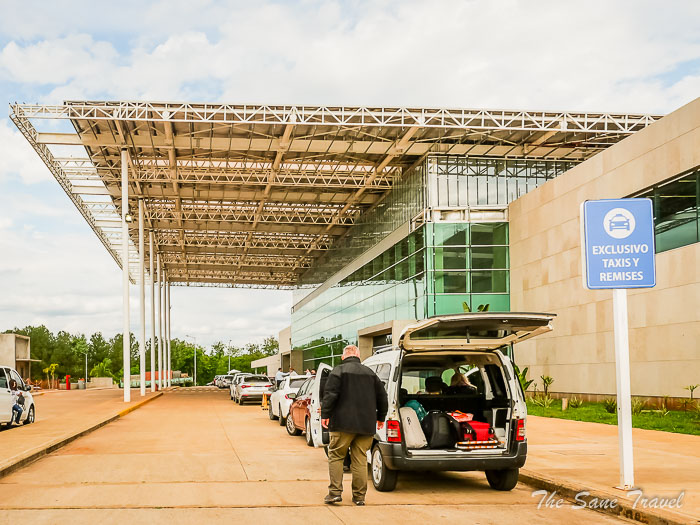 Be aware that planes flying to Iguazu are enormous, and you will be part of a big crowd.
Be aware that planes flying to Iguazu are enormous, and you will be part of a big crowd.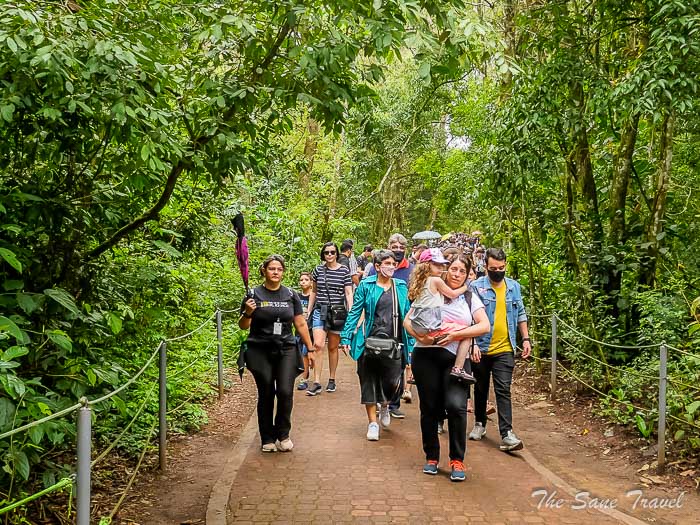
The good news is that there are luggage lockers at the entrance of the park for quick visitors.
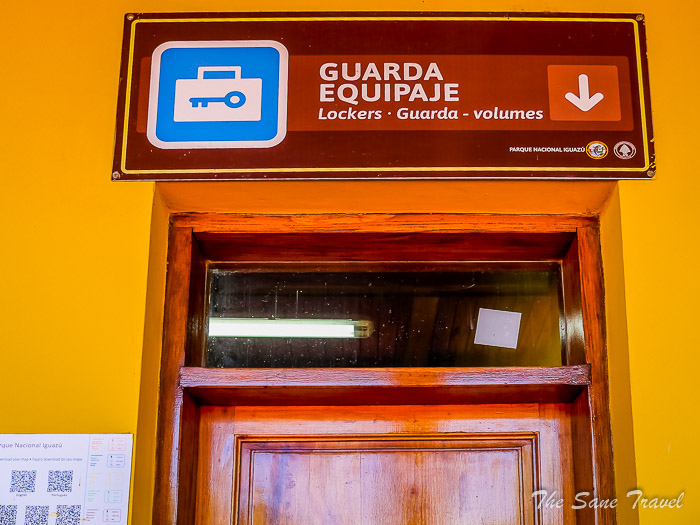
Two-day trip to the Argentinian side of Iguazu Falls
Day One
Take an afternoon flight and stay in the city of Porto Iguazu or if you want to splurge, stay in a 5-star hotel in the Iguazu National Park. If you choose to stay in Porto Iguazu, do not miss out on the opportunity to visit the triple frontier along the junction of Argentina, Brazil and Paraguay. The landmark is one of the main tourist attractions in Porto Iguazu, as it symbolises the closeness of the three Latin American countries despite the differences in language and culture. The frontiers of the three countries meet where the Iguassu River ends in the Parana River, the second-largest river in South America, just behind the Amazon River. 
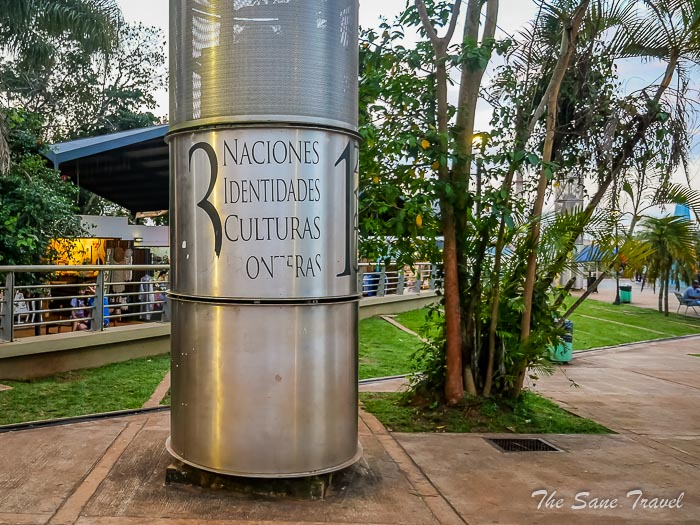
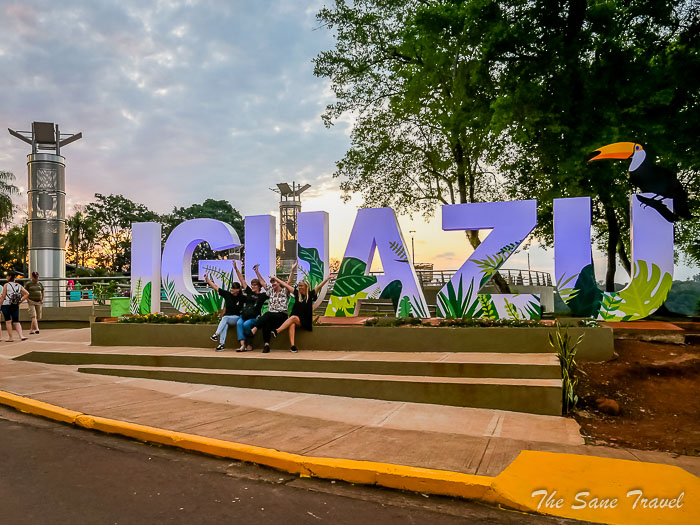 I loved the view of both rivers from the Punto AR restaurant terrace just before sunset.
I loved the view of both rivers from the Punto AR restaurant terrace just before sunset.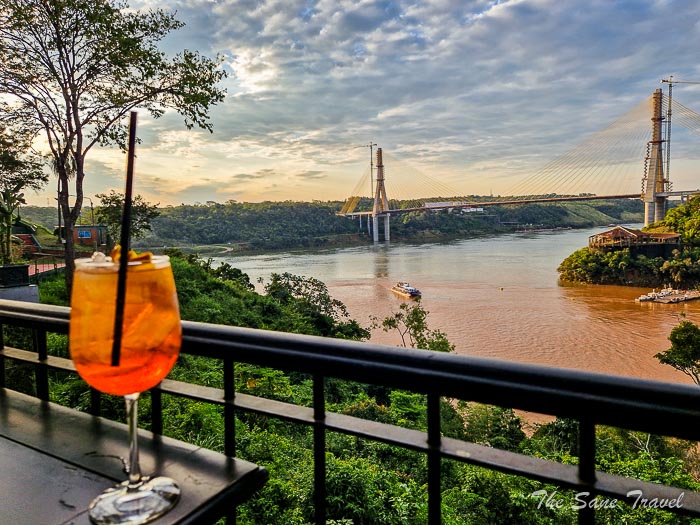
Day Two
Iguazu Falls are very popular among travellers, and if you want to avoid crowds, get up early and take a bus or taxi to the park entrance to get there by eight o'clock in the morning when the park opens its gate.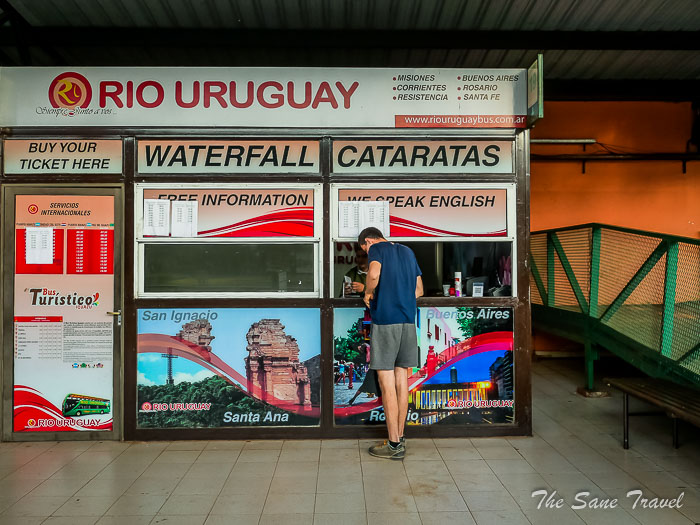
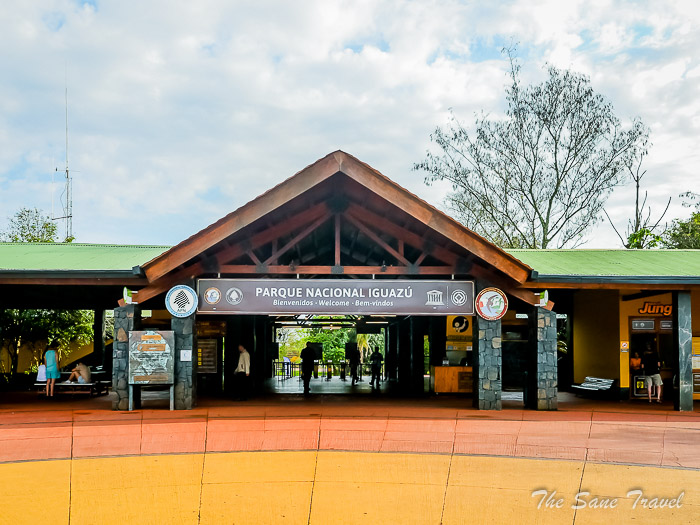 Find a booklet with a map of the park near the entrance, it can be very helpful. This map has all the paths of the park clearly marked.
Find a booklet with a map of the park near the entrance, it can be very helpful. This map has all the paths of the park clearly marked.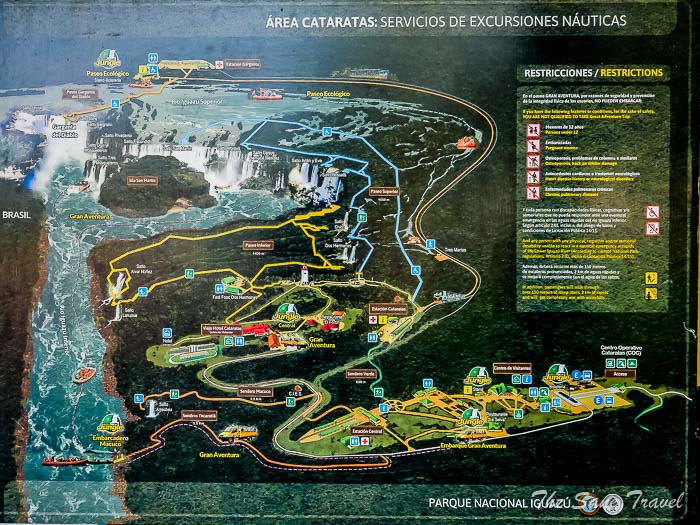 Buy your ticket and enter the park and keep going ahead. Paths are not clearly signposted, but it’s relatively easy to find your way. If you are visiting the park until March 2023, keep in mind that the flood has damaged the Devil's Throat Bridge and the Devil's Throat trail is closed for repairs until March 2023. You can take a train or walk to the starting point of the trails.
Buy your ticket and enter the park and keep going ahead. Paths are not clearly signposted, but it’s relatively easy to find your way. If you are visiting the park until March 2023, keep in mind that the flood has damaged the Devil's Throat Bridge and the Devil's Throat trail is closed for repairs until March 2023. You can take a train or walk to the starting point of the trails. 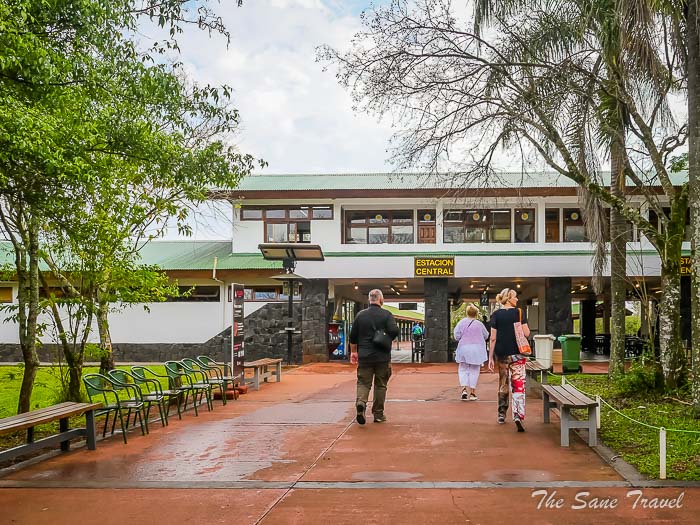
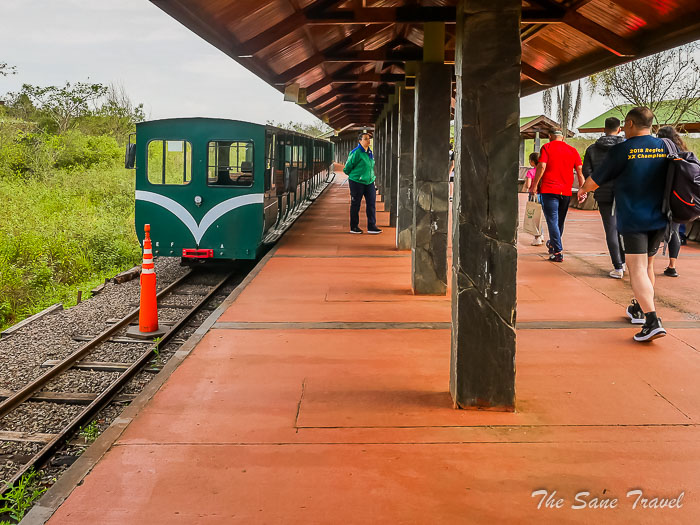
Since it’s less than a 10-minute walk to the starting point of the upper and lower trails, the use of the park train is not very reasonable. In addition, the train departs just once in 30 minutes, and there could be lines to board it. So instead, take a path to the starting point of the upper and lower trails. 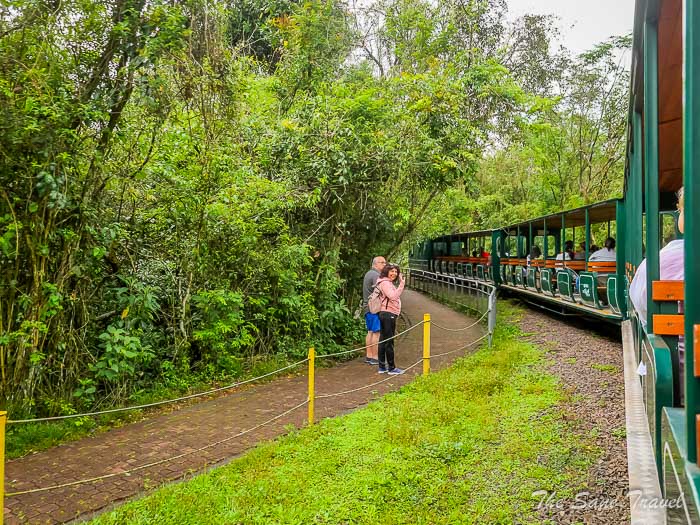 The beginning of the path is located on the right, just before the train station. The upper and lower trails are clearly marked, and it’s up to you which one to take first.
The beginning of the path is located on the right, just before the train station. The upper and lower trails are clearly marked, and it’s up to you which one to take first.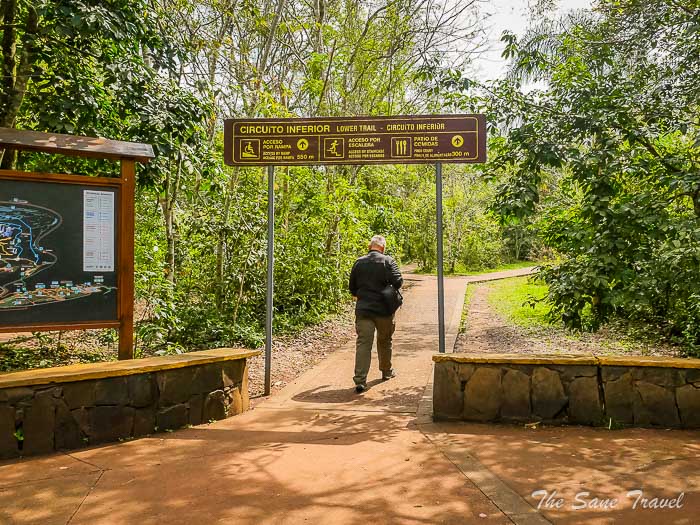
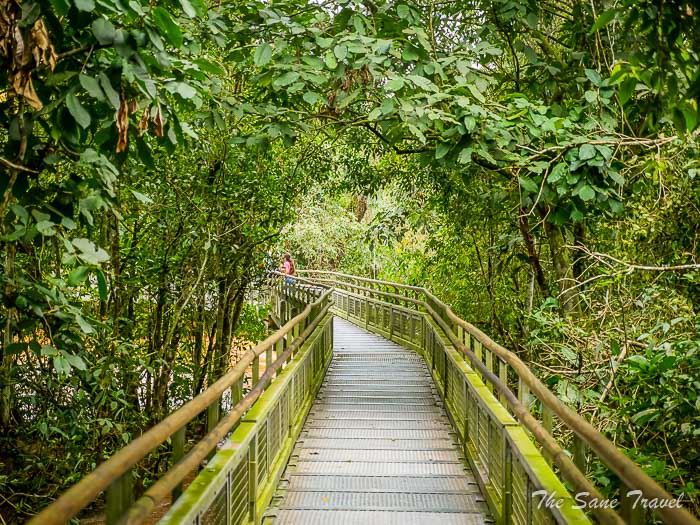

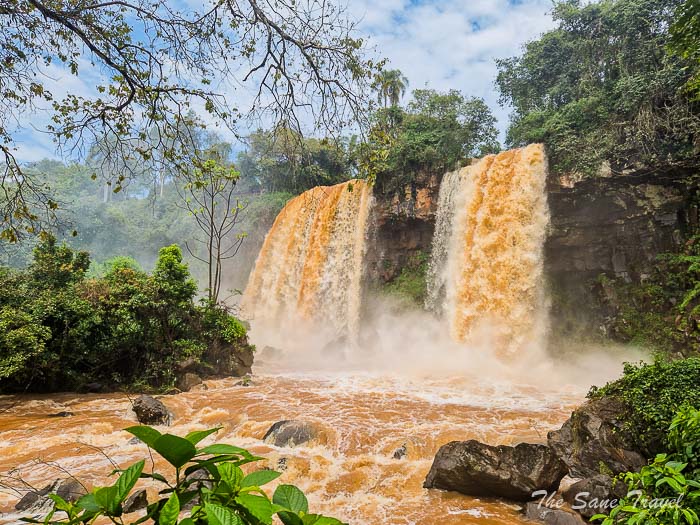
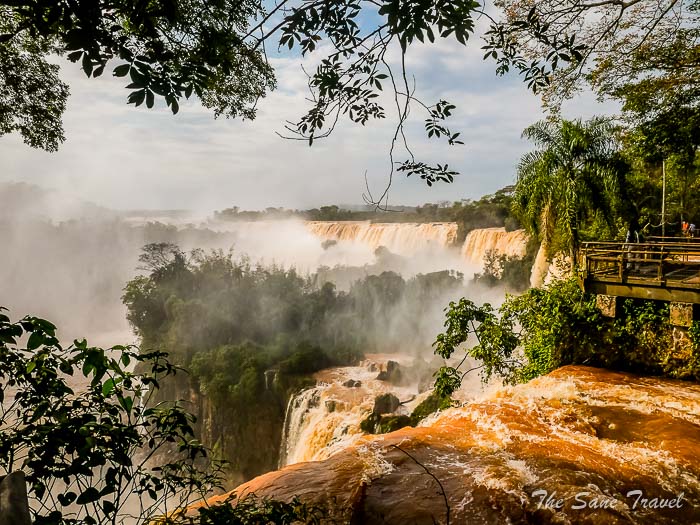
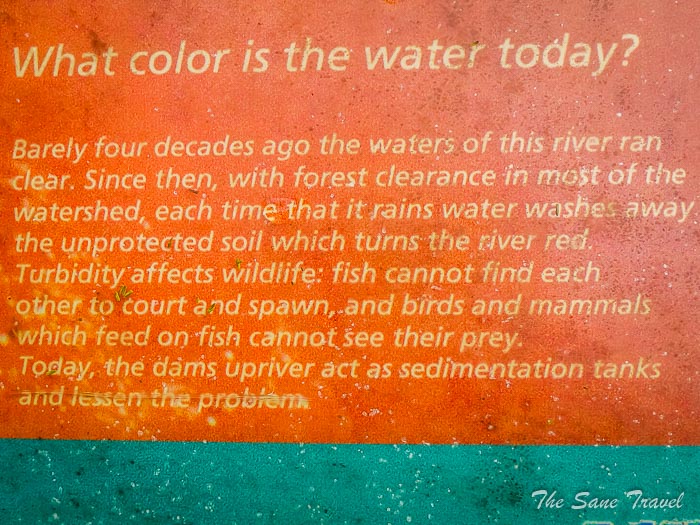
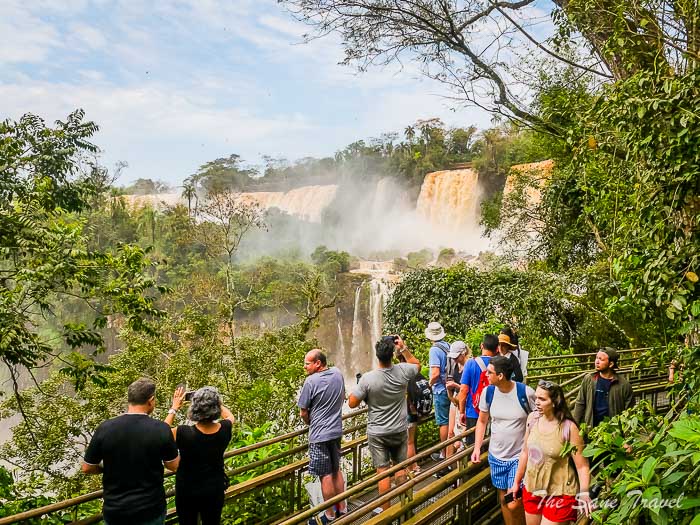 After accomplishing both trails, make sure the boat trips to the island in the middle of the river are available.
After accomplishing both trails, make sure the boat trips to the island in the middle of the river are available. 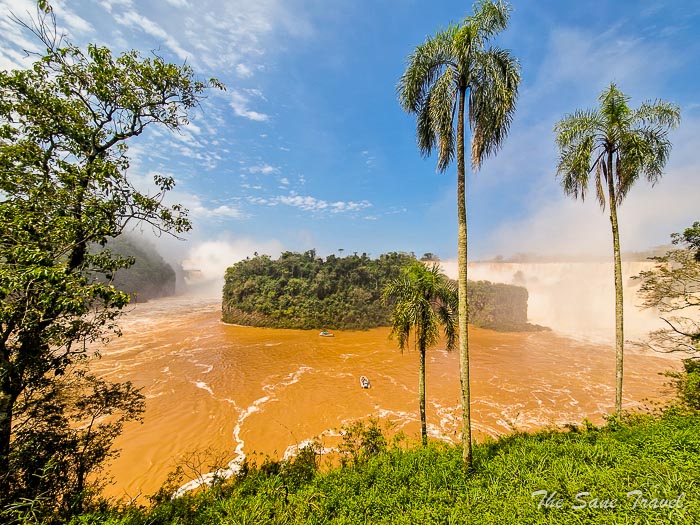 If they are, use a map in the booklet to make your way to the boat boarding point. Unfortunately, I wasn’t lucky enough to visit the island because of the high water level in the river.
If they are, use a map in the booklet to make your way to the boat boarding point. Unfortunately, I wasn’t lucky enough to visit the island because of the high water level in the river.
Where to eat in the park
Several cafes in the park offer snacks and drinks, but the choice is limited and the prices are relatively high. If you choose to have a meal in the park, be forewarned that cute little coatis are not as innocent as they look and can bite you trying to get your food. The animals also insistently raid rubbish bins and scatter rubbish along the trails despite the park authorities’ best efforts. So keep a distance from them or try to avoid them.
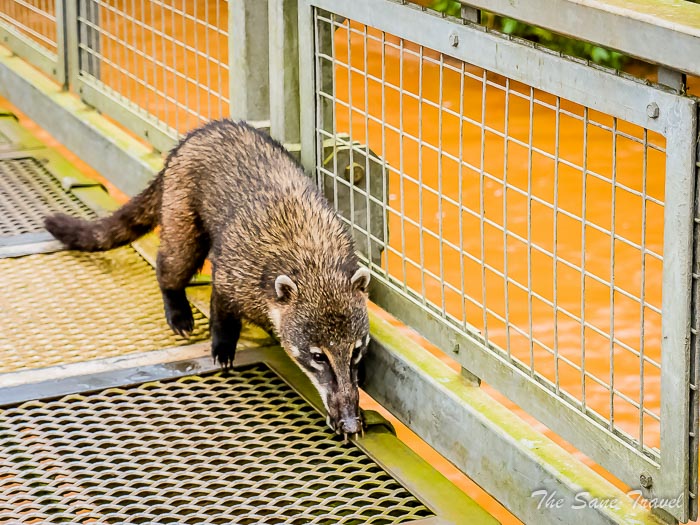
If all trails and trips in the park are available, it’s almost a full-day tour. If you do just the upper and lower trails, it’s doable up to early afternoon, and you can easily catch your evening flight. Stay one more night in the city if it’s the former.
What to bring
Check the weather forecast and get dressed accordingly. A light raincoat or waterproof clothing is good to have, especially if you plan to take a boat trip. Walkways can get wet, so non-slip footwear is advisable. A sun hat and bottle of water are much needed. Bring your own sandwiches and snacks. If you want to take pictures of animals and birds in the park, bring a camera with a good zoom lens.
Where to stay
The 5-star Gran Melia is the only hotel in the park with prices for a room starting from around 370 euros per night.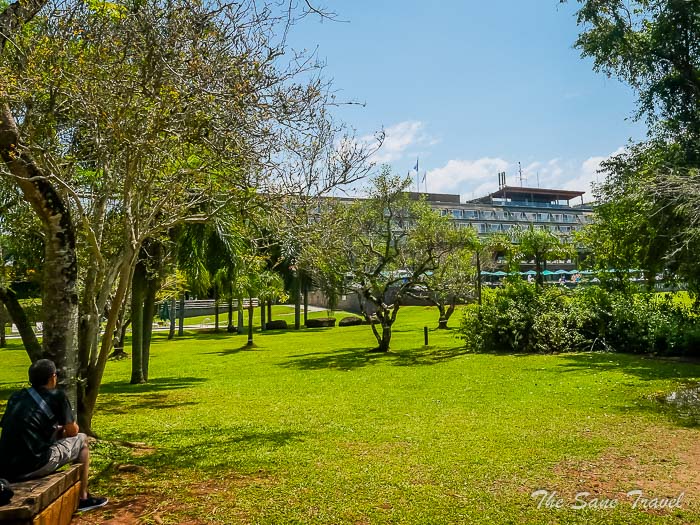
For cheaper options, you have to look for accommodation in Porto Iguazu. As I planned to go to Iguazu Falls by public bus, I was looking for a hotel close to the bus station. I stayed at Posada La Sorgente.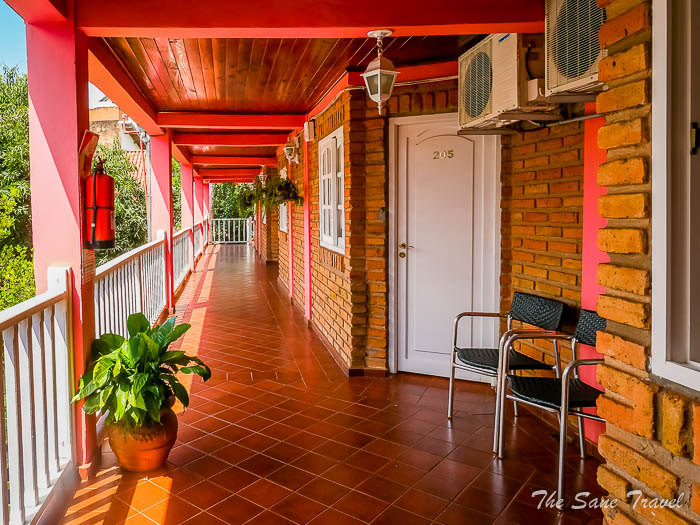
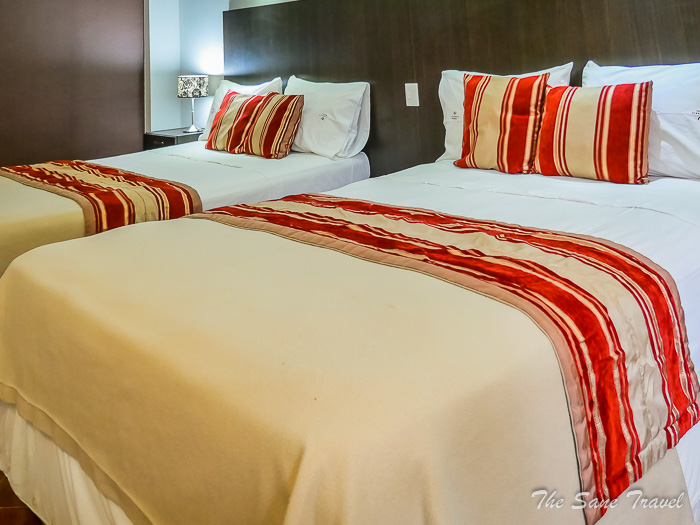 I can’t say that I recommend it because it had no breakfast option at all, the sink was in the room, and the hair dryer was broken. On the bright side, the air conditioner was operating, and the pool and poolside were lovely.
I can’t say that I recommend it because it had no breakfast option at all, the sink was in the room, and the hair dryer was broken. On the bright side, the air conditioner was operating, and the pool and poolside were lovely.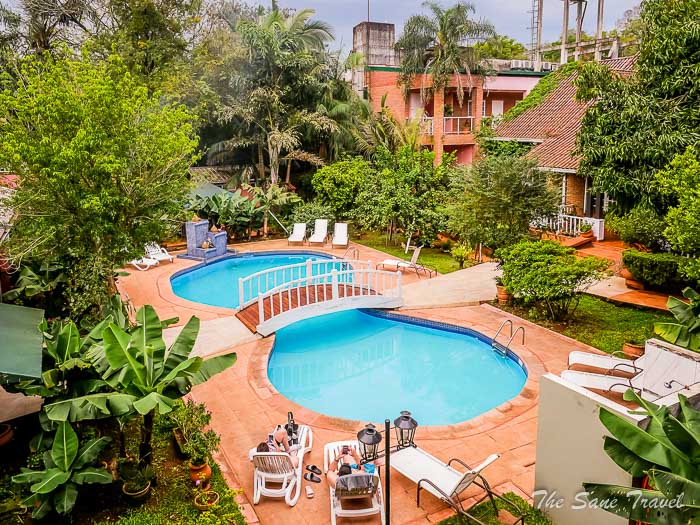
Other practical information
As anywhere in Argentina, learn about the blue dollar rate and use it to your advantage. Bring enough 100 dollar or euro notes and change them using the blue dollar rate to save massive amounts of money. Use only pesos and pay in cash everywhere.
Like it? Pin it!
What did you think? Have you visited Iguazu Falls? I’d love to hear from you so please add your comment below.
Author: Anita Sane

About the author
Anita is a part-time traveller, passionate photographer and a retired career woman from Latvia, travelling mostly solo for more than 15 years. She is a skilled travel planner who plans and executes her travels by herself. Anita wants to show you how to travel the world and open your mind to new experiences. Follow her on Facebook, Instagram, Pinterest, Twitter and Bloglovin.

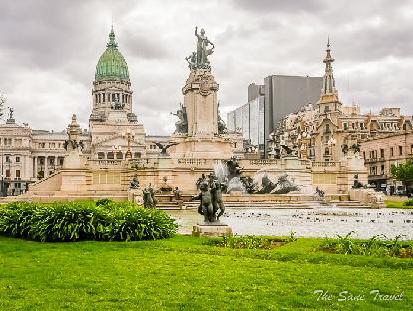



Report
My comments